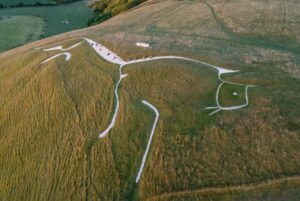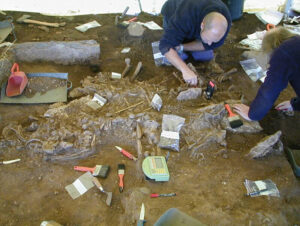How does fresh crab in a scenic Portuguese seaside cave sound? Pretty tasty, right? Turns out, Neanderthals living in just such a cave about 90,000 years ago thought so too.
Archaeologists excavating a Neanderthal site in Gruta da Figueira Brava (a cave 32km south of Libson) found a trove of crab shells, mussels, clams, and limpets between 2010 and 2013. The find — and recent analysis of the crab remnants — is another point in the growing body of evidence that Neanderthals weren’t the opportunistic scavengers many scientists have long believed they were.
“Our results add an extra nail to the coffin of the obsolete notion that Neanderthals were primitive cave dwellers who could barely scrape a living off scavenged big-game carcasses,” said Dr. Mariana Nabais, a postdoctoral researcher at the Catalan Institute of Human Paleoecology and Social Evolution in Tarragona, Spain.
In her paper The exploitation of crabs by Last Interglacial Iberian Neanderthals, Nabais and her co-authors explain that Neanderthals likely hunted the crabs in low-water tidal pools, possibly stunning them with spears before bringing them back to their cooking site. Once there, the Neanderthals roasted the animals on coals and “cracked [them] open to access the flesh.”

Does hunting for crab in this sun-splashed tidepool sound more appealing than throwing a stone-tipped spear at a giant elephant? Photo: Shutterstock
A seafood diet
Because crab pincer size is reliably correlated to crab carapace size — and because one of the crab species in question, the brown crab, is still eaten with relish in coastal western Europe to this day — researchers were able to study the broken crab pieces. They determined that Neanderthals preferred larger crabs with lots of juicy, tender flesh.
The likely size of the crabs at the site, along with their prevalence, led the researchers to theorize that this Neanderthal group was surviving largely on seafood. Such a conclusion flies in the face of conventional wisdom, which holds that foods like crab and mussels aren’t caloric enough to support the high-energy cost of hominid life in the Middle Paleolithic.
But it’s not just about calories. As Nabais et al. argue in their introduction, “marine resources [are valuable] because of their protein and vitamin intake, fat content, reliability, and low-risk collection.”
Makes sense. If you faced the choice of hunting an animal with a high likelihood of goring and trampling you, versus splashing around in a tidal pool after a pinchy crustacean, which would you choose?

By analyzing the size of the brown crab pincer remnants at Gruta da Figueira Brava, scientists were able to determine that Neanderthals at the site harvested about 198g of crab meat per animal.
Not as caloric as giant elephants but safer to hunt
The recent study detailing the ability of Neanderthals to hunt large animals like giant elephants changed the way scientists viewed the tribal life of our evolutionary cousins. In short, Neanderthals lived in larger groups than we previously believed.
The information presented in the crab paper, by contrast, is a little more cut and dried. As the authors note in their conclusion, “whether meanings other than the satisfaction of alimentary needs were involved must remain a matter for speculation; what is certain is that this resource provided coastal populations of Neanderthals with an ample array of nutrients rich in protein, DHA, calcium, and sodium, which are important to a healthy diet.”






